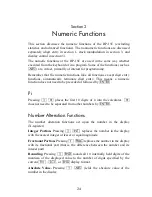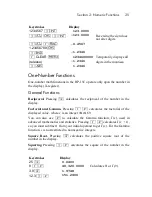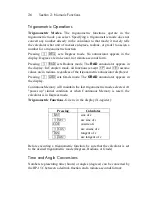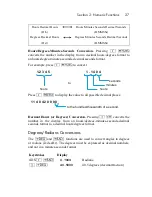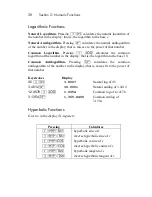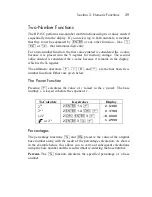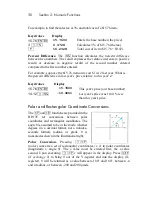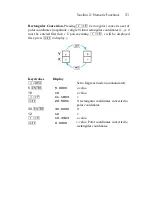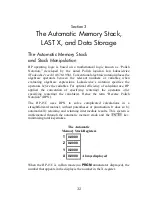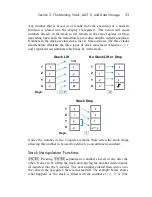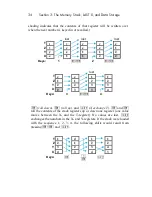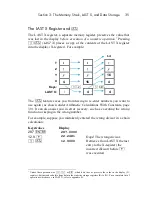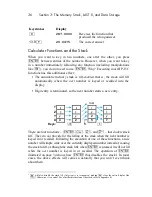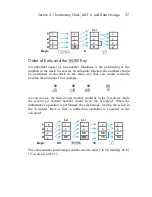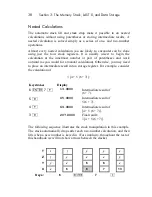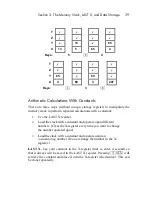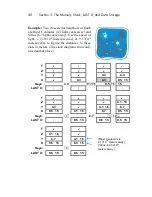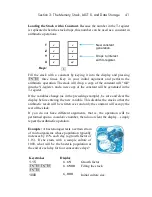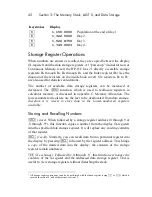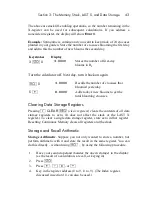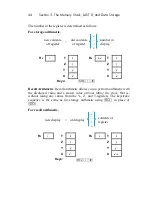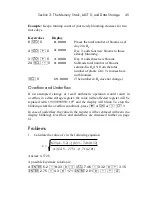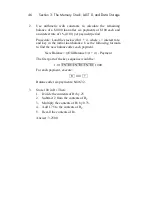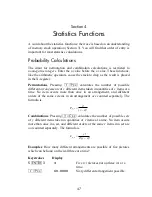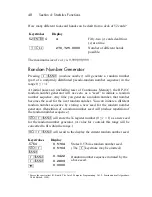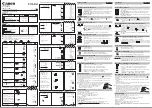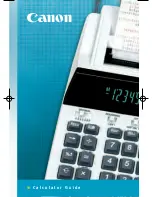
Section 3: The Memory Stack, LAST X, and Data Storage
33
Any number that is keyed in or results from the execution of a numeric
function is placed into the display (X-register). This action will cause
numbers already in the stack to lift, remain in the same register, or drop,
depending upon both the immediately preceding and the current operation.
Numbers in the stack are stored on a last-in, first-out basis. The three stacks
drawn below illustrate the three types of stack movement. Assume
x, y, z,
and
t
represent any numbers which may be in the stack.
Stack Lift
No Stack Lift or Drop
lost
T
t
z
T
t
t
Z
z
y
Z
z
z
Y
y
x
Y
y
y
X
x
π
X
x
x
Keys:
|$
¤
Stack Drop
T
t
t
Z
z
t
Y
y
z
X
x
x + y
Keys:
+
Notice the number in the T-register remains there when the stack drops,
allowing this number to be used repetitively as an arithmetic constant.
Stack Manipulation Functions
v
.
Pressing
v
separates two numbers keyed in one after the
other. It does so by lifting the stack and copying the number in the display
(X-register) into the Y-register. The next number entered then writes over
the value in the X-register; there is no stack lift. The example below shows
what happens as the stack is filled with the numbers 1, 2, 3, 4. (The
Содержание HP-15C
Страница 1: ...HP 15C Owner s Handbook HP Part Number 00015 90001 Edition 2 4 Sep 2011 ...
Страница 17: ...Part l HP 15C Fundamentals ...
Страница 64: ......
Страница 65: ...Part ll HP 15C Programming ...
Страница 118: ...118 ...
Страница 119: ...Part lll HP 15C Advanced Functions ...






